Anthony Burgess is best known today as the author of A Clockwork Orange, the classic dystopian novel which was later adapted for the screen by Stanley Kubrick. In total, though, the Englishman published more than 50 books including novels, biographies and literary criticism, as well as being an accomplished musician and composer. Indeed, such was his love of music that Burgess once declared: “I wish people would think of me as a musician who writes novels, instead of as a novelist who writes music on the side”.
Born in 1917, John Anthony Burgess Wilson was raised in the British city of Manchester. His mother, Elizabeth, died of influenza before his second birthday and his father, Joseph, remarried four years later. Burgess endured a difficult relationship with his stepmother and lived for much of his early childhood with his maternal aunt in cramped rooms above her tobacconist’s shop. Despite showing an early talent for writing and music, he received little encouragement from his family, but did gain a good education at the Catholic-run Xaverian College. He then went on to study at the University of Manchester, graduating, in 1940, with a degree in English Literature.
Following a stint with the Army Educational Corps in Gibraltar during World War II, Burgess entered the teaching profession and worked back home in England before accepting a post at the Malay College in the Malaysian state of Perak. The budding author published his first three novels whilst living and working in the Far East, largely inspired by his experiences there.
Burgess returned to England in 1959, after being unexpectedly diagnosed with a life-threatening brain tumor. Subsequent medical tests back home in England proved negative, but the novelist later attributed this incident as motivation for his decision to focus exclusively on his writing career. Over the following five years he produced a substantial body of work including A Clockwork Orange.
For a man who only started to write professionally in his early forties, Burgess’s output as an author proved prodigious. In total, he published over 30 novels, as well as 25 nonfiction books and a huge quantity of book reviews and newspaper articles. He also became a highly successful screenwriter, notably on Zeffirelli’s Jesus of Nazareth. Burgess also continued to pursue his passion for musical composition and is estimated to have completed more than 150 works including choral and orchestral pieces.
Following the death of his first wife, Llewela, in 1968, Burgess married an Italian translator named Liana Macellari and thereafter spent most of his time abroad. More than three decades after that first misdiagnosis, Burgess eventually died of lung cancer, aged 76, in November 1993.
Burgess once described his novels as “usually intended primarily to entertain, but a fairly serious element creeps into them, often against my will”. Although renowned for his dystopian novels set in the future, his other fiction covers an unexpectedly diverse range of subject matter and historical periods. Bearing in mind the recent revival of interest in this iconic 20th-century author’s work, here are 10 of his best novels, ranging from imaginative fresh fictional perspectives on the lives of Shakespeare and Napoleon Bonaparte to a Cold War espionage thriller.
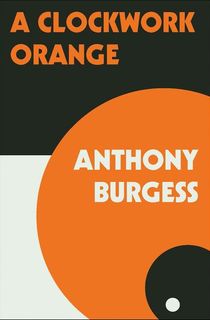
A Clockwork Orange
Published in 1962, A Clockwork Orange vividly depicts a nightmare future world in which gangs of teenage criminals, known as droogs, run riot in the streets after dark and commit shocking acts of violence for apparently no other reason than boredom and a general disaffection with society. One gang member, 15-year-old Alex, acts as the novel’s narrator, speaking for the most part in “Nadsat”, a highly inventive fictional slang specially created for A Clockwork Orange by Burgess. When Alex eventually falls foul of the authorities, they are prepared to adopt equally drastic measures to convert him into a model citizen.
A Clockwork Orange has become notorious for its graphic depiction of extreme violence, particularly following Stanley Kubrick’s controversial 1971 movie adaptation. Yet, beneath the surface of this “savage satire on the distortions of the single and collective minds” (New York Times) lies a darkly comic and highly emotive novel, which raises many fascinating questions regarding human morality, the conflict between the individual and the state, and the concept of free will.
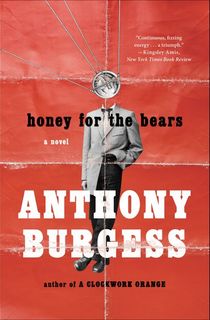
Honey for the Bears
Largely set in Leningrad (now St. Petersburg), this satirical black comedy showcases Burgess’s extensive knowledge of Russian culture and language. The author had visited the Russian city only two years before the publication of this 1963 novel, described as “memorably entertaining” and “a triumph” by Burgess’s fellow novelist, Kingsley Amis.
The novel’s main protagonist is Paul Hussey, an English antiques dealer who travels to Leningrad with his wife, Belinda, on a mission to sell a large quantity of women’s dresses which he has acquired on the black market. However, things do not entirely go to plan, as Belinda is taken ill and then falls in love with her Russian nurse. Meanwhile, Hussey attracts the attention of the Soviet secret police after unintentionally becoming embroiled with a group of political dissidents.
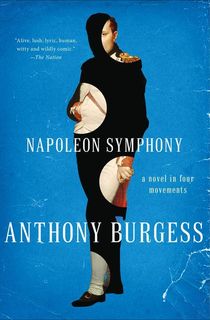
Napoleon Symphony
This ingenious 1974 novel was originally intended as a screenplay for a Stanley Kubrick biopic of Napoleon Bonaparte which never made it to the big screen. Its innovative narrative structure is inspired by Beethoven’s Third Symphony, originally composed as an homage to the famous French general. Like Beethoven’s symphony, the novel is divided into four movements, each representing key moments in Napoleon’s life and military career.
Drawing on his considerable linguistic and musical ability, Burgess famously described Napoleon Symphony as “elephantine fun” to write. Packed full of the witty literary and musical allusions that are so characteristic of Burgess’s work, this bawdy comedy provides a unique take on one of history’s most fascinating characters as well as providing interesting insight into the cost of human ambition.
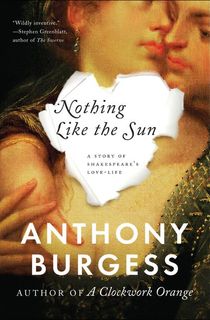
Nothing Like the Sun
Burgess turned to the life of William Shakespeare as inspiration for this novel which was published in 1964 to mark the 400th anniversary of the playwright’s birth. In this highly fictionalized account, the novelist charts the literary and sexual awakening of the young Shakespeare who travels to London, intent on making his name.
The ever-inventive Burgess employs a linguistic style reminiscent of James Joyce, combined with a clever reworking of Elizabethan English, to create this uniquely conceived insight into Shakespeare’s life and loves.
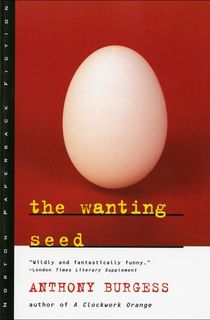
The Wanting Seed
Published in the same year as A Clockwork Orange, Burgess offers another nightmare vision of the future in The Wanting Seed. Tristam Foxe and his wife, Beatrice-Joanna, live in a time of mass global overpopulation which has resulted in a strange and frightening new world, where pregnancy is required to be sanctioned by the state and the countryside no longer exists. Instead, it has become one giant urban space occupied by skyscrapers.
Tristam’s struggle to deal with the fall-out from an unplanned pregnancy is set against the backdrop of a large-scale revolt against the oppressive regime. This, though, only leads to an even more grotesque turn of events, as, at a time of mass food shortages, people turn to cannibalism.

Tremor of Intent
Aging British secret agent, Denis Hillier, is sent on a top-secret mission to Russia following the bombshell news that one of the country’s greatest scientific minds has defected to the Soviet Union. The scientist, Roper, is an old school friend of Hillier’s and the secret agent is tasked with bringing him back to England or risk losing his sizeable retirement pot. Featuring a cast of extraordinary characters, this clever parody of the era’s popular Cold War spy thrillers won praise from New Republic for having “more wit and comic invention than the books which it so boisterously ridicules”.

Beard's Roman Women
This “mortifying funny novella, with big themes and small pretensions” (Times Literary Supplement) is widely believed to have been loosely inspired by events in Anthony Burgess’s own life.
Recently bereaved scriptwriter, Ronald Beard, discovers new love whilst working on a screenplay in Los Angeles. He begins an affair with glamorous Italian photographer, Paola Bella, and later moves to Rome to be with her. Here he meets an assortment of odd characters and finds himself apparently haunted by his dead wife, as he struggles to deal with powerful memories of the past, problems in the present and an uncertain future.

Earthly Powers
The fictional 81-year-old British author, Kenneth Toomey, narrates this multi-layered 1980 novel. As Toomey recalls his life from the days of World War I onwards and his constant struggle to reconcile his homosexuality with his Catholic faith, he contrasts his own experiences with those of his high-achieving brother-in-law, Carlo Campanati. The latter enjoyed a prodigious rise through the clerical ranks all the way to the papacy, but when Toomey is invited to work on his brother-in-law’s memoirs following his death, he begins to re-evaluate their relative experiences.
Packed full of witty historic and literary allusions, The New York Times praised Earthly Powers as a “feat of imaginative breadth and intelligence which lifts fiction high”.

The Long Day Wanes: A Malayan Trilogy
This collection brings together Burgess’s first three short novels, written during his time in Malaya and originally published individually under the titles of Time for a Tiger, The Enemy in the Blanket and Beds in the East. Written at a time when British colonial rule was coming to an end, the three books narrate the adventures and mishaps of one Victor Crabbe, an English teacher who has been posted to Malaya.
In Time for a Tiger, the hapless Crabbe is persuaded to buy a car which he then shares with two other men, leading to a series of comic misadventures. The Enemy in the Blanket is set during the time of the Malayan Emergency, a Communist uprising which Burgess himself experienced first-hand. The third novel, Beds in the East, is set towards the end of British colonial rule and sees Crabbe acting as mentor to a young Malay composer. As the country edges towards independence, dark secrets from the Englishman’s own past come to the surface.

A Dead Man in Deptford
Published in 1993 to coincide with the 400th anniversary of Christopher Marlowe’s murder, A Dead Man in Deptford reimagines the riotous life and violent death of the playwright who was once considered Shakespeare’s greatest rival. Written with his customary unbridled verve and humor, Anthony Burgess provides a clever imaginary take on the fascinating dual life of Marlowe, who combined his accomplishments as one of the 16th-century’s most popular dramatists with a shadowy role in the undercover world of Elizabethan England espionage.
The Times (London) commented that “If you want a Marlowe that breathes and an England that attacks the senses then you will find both in Anthony Burgess’s astonishing final novel, A Dead Man in Deptford”.
This post is sponsored by Open Road Media. Thank you for supporting our partners, who make it possible for Early Bird Books to celebrate the novels you love.




